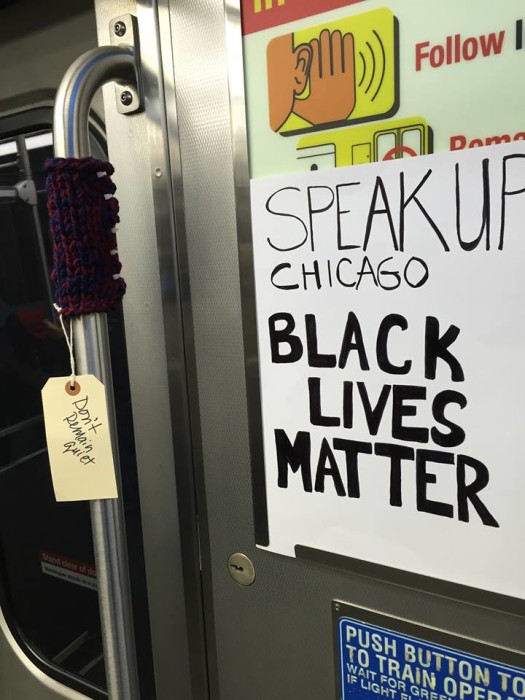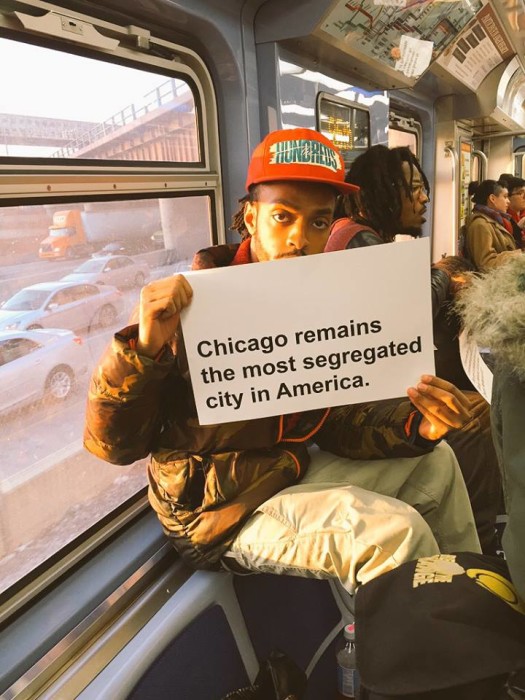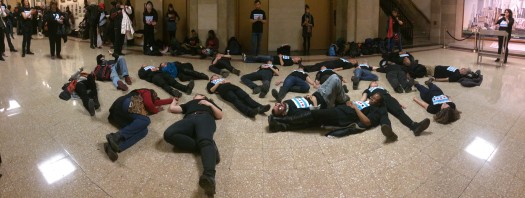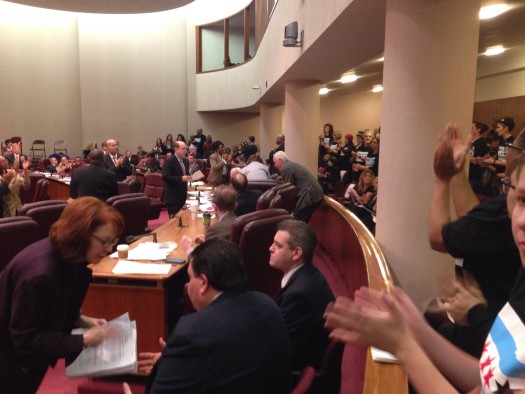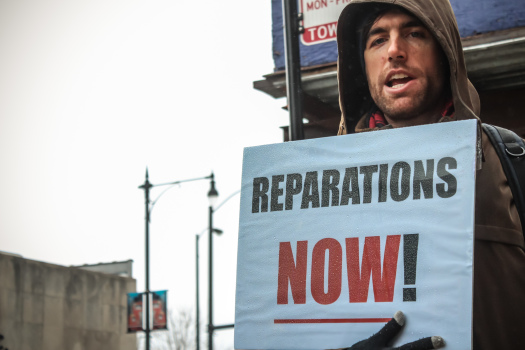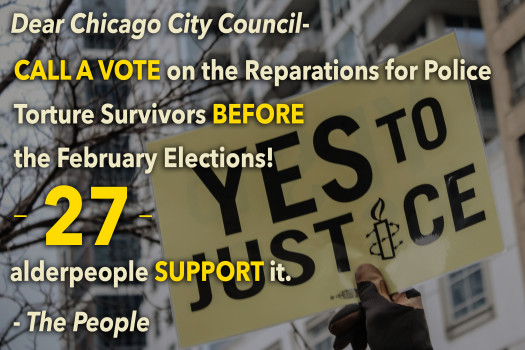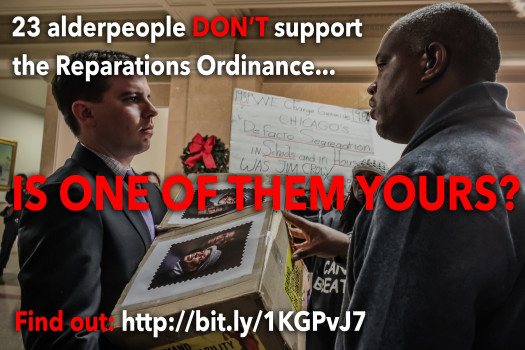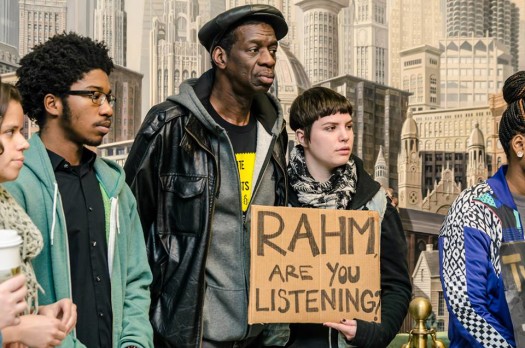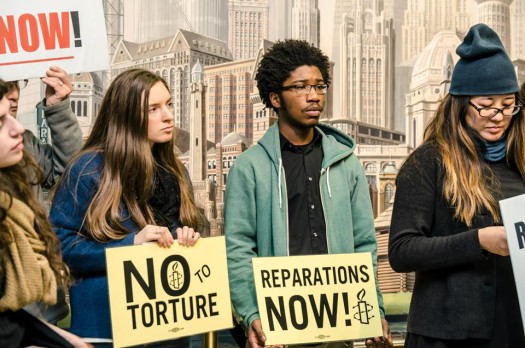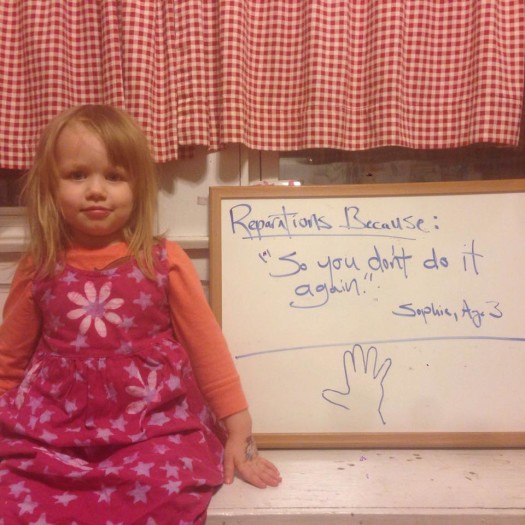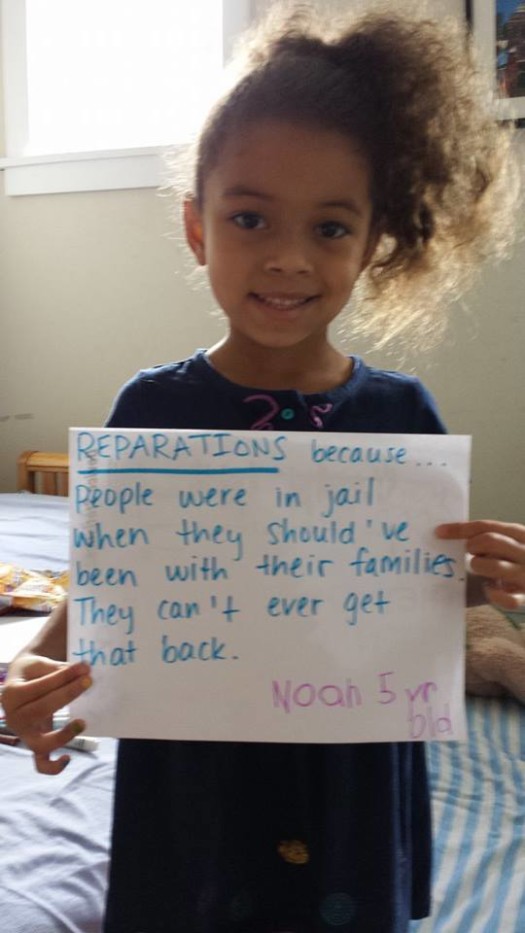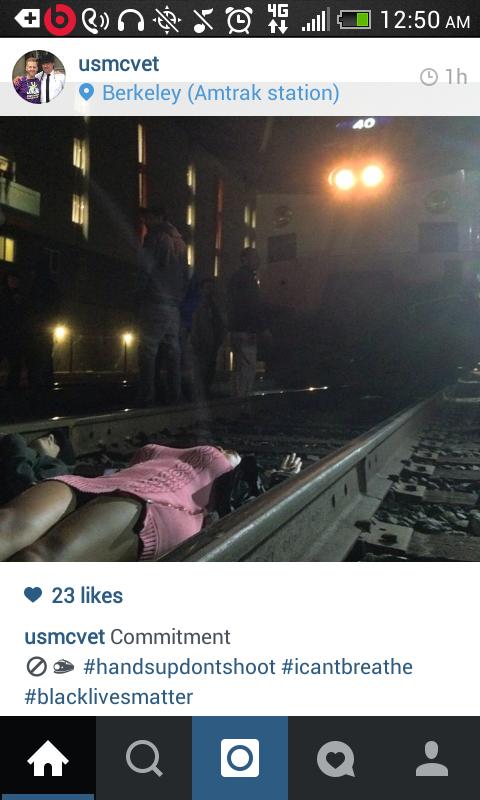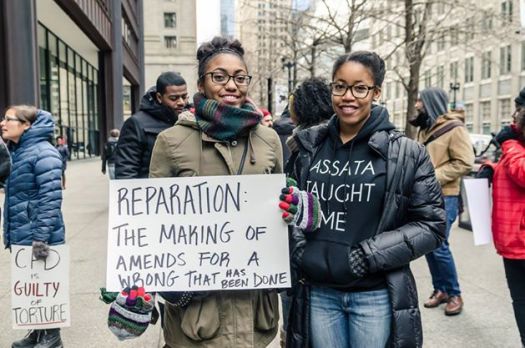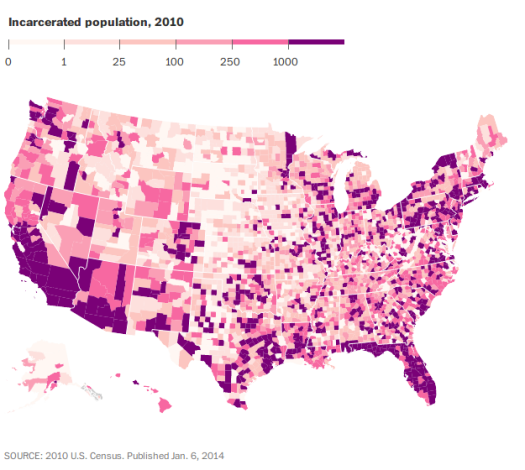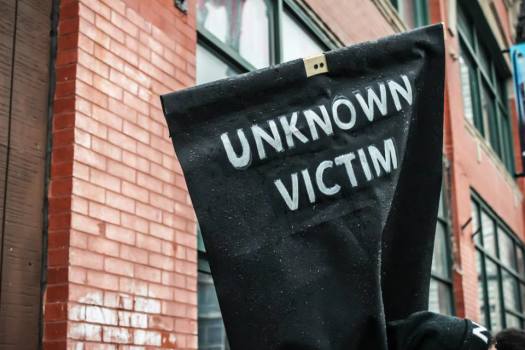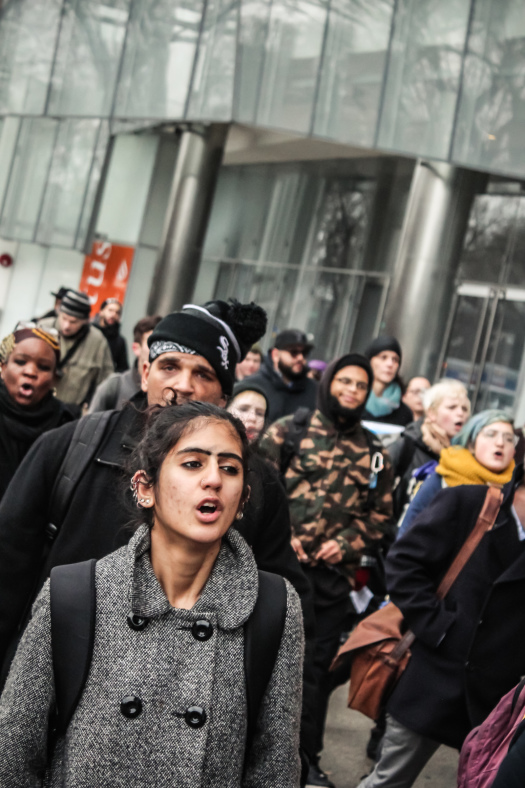It was Dr. Martin Luther King’s actual birthday on Thursday and Chicago was in the mood to celebrate through study, action and protest. As part of an effort to #ReclaimMLK, Chicagoans demanded reparations for police torture survivors, gathered to discuss the radical roots of the Black Freedom Movement, called out a list of the system’s crimes against those most marginalized and finally marched by the hundreds in solidarity with a youth-led protest on the near Westside of Chicago.
Listen to these words offered by Kaleb Autman, a 12 year old student at Village Leadership Academy & co-organizer of the ReclaimMLK march and by Page May, a young organizer with We Charge Genocide who helped VLA students bring their vision to fruition. Listen to their words to better understand the current rebellions led mostly by young people of color taking place across the country.
I was invited to speak at Thursday’s rally and march. I had jotted down a few words but when it came time for me to speak I decided to focus on what was in front of me rather than on what I had planned to share. You see, by the time I was called to speak, we were in front of the Cook County Juvenile Temporary Detention Center (Chicago’s youth jail) and I could hear the children who were locked in cells insistently pounding on their windows.
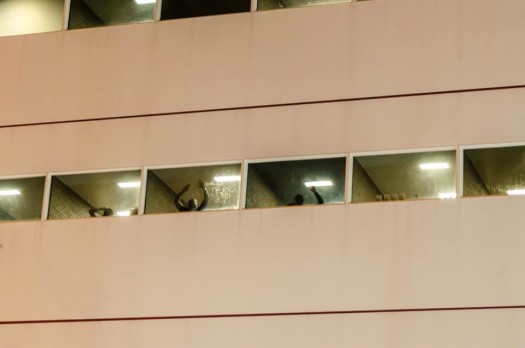
photo by Sarah Jane Rhee (1/15/14)
Their message to us on the outside was urgent and unequivocal: “Free Us.”
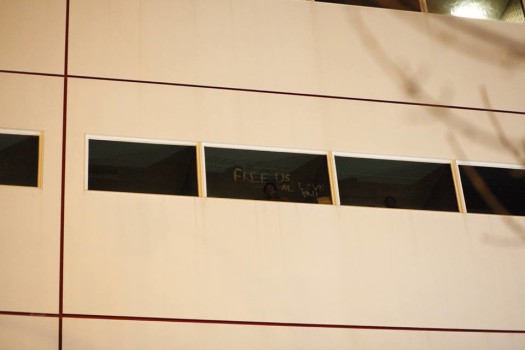
photo by Silvia Ines Gonzalez (1/15/15)
I turned and looked to my right. I saw my friends of the Chicago Light Brigade holding light boards spelling out “Free Us All” as they projected the words “Indict the System” on the side of the courthouse. I struggled to hold back tears.
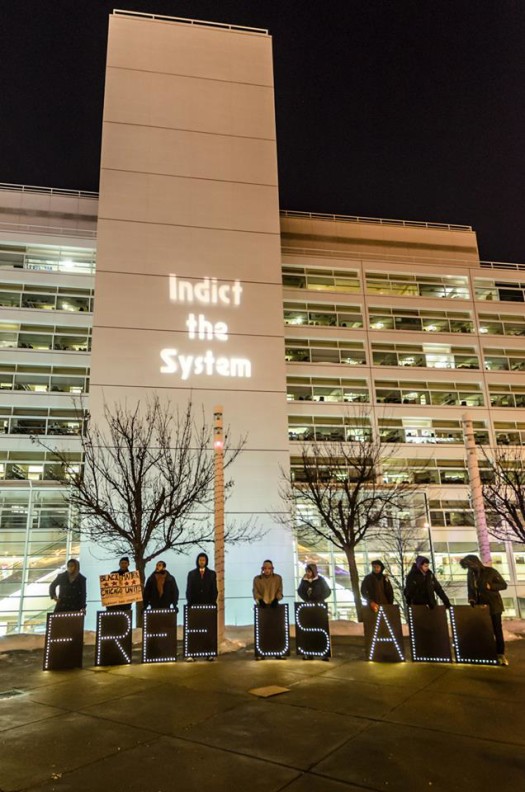
photo by Sarah Jane Rhee (1/15/15)
It was the vision of a group of Black elementary school students that we march 2.5 miles from their school to the juvenile jail to underscore how close they are to being funneled through the pipeline to prison. My friend Kelly Hayes, who helped organize the march, wrote beautifully about the proximity of incarceration for these students:
VLA student Jakya Hobbs told us, “It is this system that keeps us from the world.” Her use of the word “us” was very intentional in this context. These student organizers see no distinction between themselves and the incarcerated, and rightly believe that as long as black and brown children are criminalized and caged, no young person is truly free. In elementary school, they understand what it took me decades to comprehend: Prisons don’t simply confine prisoners. They confine hopes and ambitions, and dampen the faith of those who might otherwise dare to believe in better things. Living as a black or brown person in a country where the prison industrial complex cages over two million of our brothers and sisters means walking through the world with the knowledge that, while you may have eluded the slave catcher, many of your people will not.
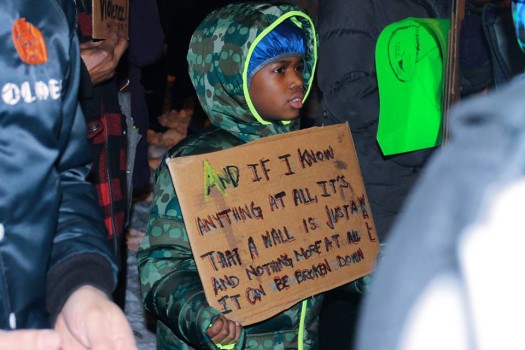
photo by Bob Simpson (1/15/15)
Over 600 people braved the Chicago cold to march alongside the young organizers of the protest. I was so proud to live in this city as people of all ages, genders, class backgrounds and races responded to their call to action. I felt hopeful.
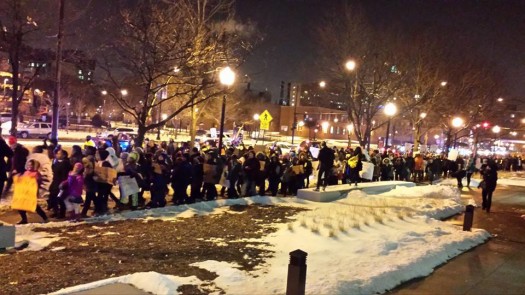
photo by Osei David Andrews-Hutchinson (1/15/15)
One of the children in the jail scrawled out the words “I <3 You” on his window. It read crystal clear to those of us standing outside of the jail. People responded by calling out and signing their love in kind.
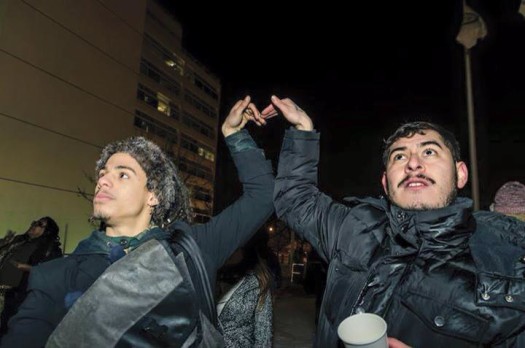
photo by Sarah Jane Rhee (1/15/15)
Thursday’s #ReclaimMLK march was a manifestation of love in action. It’s that simple and that complex. If these uprisings and rebellions are to develop into a movement, love will have to be centered alongside power. This is a truth gleaned from past movements and leaders:
Power, properly understood, is the ability to achieve purpose. It is the strength required to bring about social, political, or economic changes. In this sense power is not only desirable but necessary in order to implement the demands of love and justice. One of the greatest problems of history is that the concepts of love and power are usually contrasted as polar opposites. Love is identified with a resignation of power and power with a denial of love. What is needed is a realization that power without love is reckless and abusive and that love without power is sentimental and anemic. Power at its best is love implementing the demands of justice. Justice at its best is love correcting everything that stands against love.
Source: pp. 324-325 in The Autobiography of Martin Luther King, Jr. Edited by Clayborne Carson (1998).
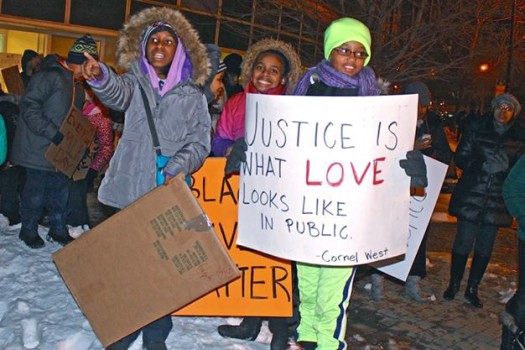
Photo by Bob Simpson (1/15/15)
In the end though, I will remember three words from this action: “Free Us All.”
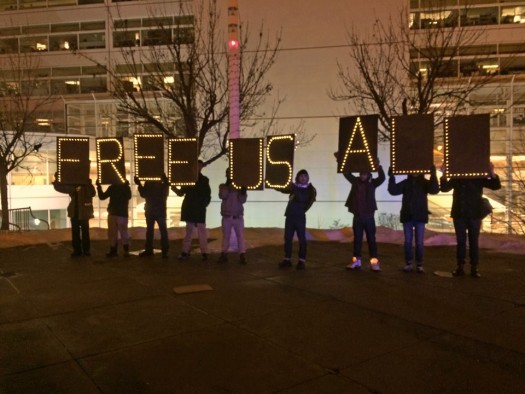
photo by Bob Simpson (1/15/15)
These words will ring out as we continue to struggle and fight for a more just and peaceful world. “Free Us All” is our North Star helping us to find our way in our journey toward liberation.
